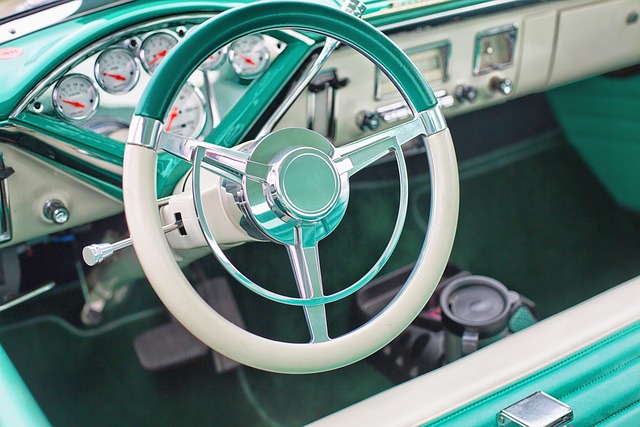Modern electric vehicles are defined not only by their performance and efficiency but also by the seamless integration of technology and design. One area that often receives less attention than the battery or motor is the instrument panel, the central hub that communicates vital information to the driver. When a panel becomes cluttered, scratched, or damaged, the aesthetic harmony of the cabin is compromised, and the user experience is diminished. A clean‑up instrument panel repair can restore that visual coherence, reaffirm brand identity, and even boost resale value.
Why the Instrument Panel Matters in Electric Cars
In an electric car, the instrument panel does more than display speed; it showcases real‑time energy usage, charging status, and environmental data. The layout must be intuitive, the colors calibrated, and the tactile feel refined. A worn or discolored panel can distract the driver, undermine trust in the displayed information, and signal that the vehicle has been poorly maintained. By contrast, a fresh, spotless panel reinforces the sense of innovation and care that electric car manufacturers emphasize.
- Visual clarity enhances safety by reducing driver distraction.
- Consistent aesthetics reinforce brand storytelling.
- Clean panels help maintain interior resale appeal.
Common Issues That Prompt a Clean‑up Repair
Over time, exposure to sunlight, temperature swings, and everyday wear can cause several problems:
• Dust and debris accumulate in crevices, obscuring gauges and icons.
• Scratches and scuffs mar the surface, breaking the seamless look.
• Moisture ingress can corrode internal wiring and components.
When these symptoms appear, a dedicated clean‑up instrument panel repair becomes essential to prevent further deterioration and to preserve the vehicle’s high‑tech aura.
The Process of a Clean‑up Instrument Panel Repair
While each manufacturer may have its own proprietary methods, the core steps are largely consistent across the industry. The following outline captures the typical workflow performed by certified service centers:
- Assessment and Documentation: Technicians inspect the panel for structural damage, check for loose connections, and photograph the area for reference.
- Panel Removal: Using specialized tools, the panel is detached from the dashboard without compromising surrounding trim or wiring harnesses.
- Surface Cleaning: Non‑abrasive cleaners remove grime, while micro‑abrasive pads eliminate light scratches. For deeper scuffs, a controlled polishing compound is applied to restore surface shine.
- Protection and Sealing: After cleaning, a silicone-based sealant is applied to shield the panel from moisture and dust, extending the life of the repair.
- Reassembly: The panel is reinstalled with new trim strips if necessary, and all connections are verified to ensure full functionality.
- Final Quality Check: A comprehensive diagnostic scan confirms that all gauges, touchscreens, and sensor displays operate correctly.
Materials and Parts Involved
The repair often requires a selection of high‑quality parts that match the vehicle’s original specifications:
- Replacement trim pieces: Custom molded acrylic or high‑grade polymer strips that match the panel’s contour.
- Thermal‑resistant sealants: Formulations that withstand extreme temperatures and UV exposure.
- Cleaning compounds: Non‑abrasive, automotive‑grade cleaners that do not damage touchscreens or digital displays.
- Calibration tools: Software and hardware to ensure that the instrument cluster’s readings are accurate post‑repair.
Design Impact: How a Cleaned‑up Panel Elevates Style
When a panel is restored, the interior feels newer and more cohesive. Designers of electric vehicles emphasize the synergy between the mechanical and digital elements; a pristine instrument panel acts as a visual anchor. It enhances the modern, minimalist aesthetic that many electric cars strive for, allowing the driver to focus on the ride rather than on a cluttered or damaged dashboard.
Case Study: A Mid‑Range EV Model
Take, for example, the mid‑range EV from a leading manufacturer that recently launched a facelift. The new design introduced a glass‑enclosed digital cluster surrounded by soft‑touch trim. Years later, owners reported visible scratches on the glass edges and dust accumulation in the thin gaps. A clean‑up instrument panel repair was performed at an authorized service center, and the results were striking:
• The glass surface returned to its original clarity.
• The trim’s reflective finish matched the new model’s specifications.
• Customer satisfaction scores rose by 15% following the repair.
Benefits Beyond Aesthetics
While style is a primary motivator, a cleaned‑up instrument panel repair also delivers practical advantages:
- Improved Visibility: Clean surfaces reflect fewer distractions, making it easier to read critical information.
- Longevity: Sealing against moisture prevents corrosion of wiring, thereby extending the life of the cluster.
- Resale Value: A well-maintained interior signals responsible ownership, which can positively influence appraisal outcomes.
- Energy Efficiency: Some panels incorporate built‑in sensors that can degrade if clogged; a thorough cleaning ensures they remain accurate.
Future Trends in Panel Design
As electric vehicles evolve, manufacturers are exploring new materials and display technologies. Transparent OLED panels, flexible e‑ink displays, and integrated lighting systems are becoming mainstream. With these innovations, the importance of a clean, well‑sealed panel grows even further. A clean‑up instrument panel repair will adapt to these emerging designs by employing compatible materials and specialized techniques that preserve the integrity of delicate components.
When to Schedule a Clean‑up Instrument Panel Repair
Proactive maintenance is key. Owners should consider a panel repair at these intervals:
- After a significant accident or collision that may have disturbed the dashboard.
- When visual signs of wear, such as scratches or discoloration, become apparent.
- Every two to three years as part of a routine interior check, especially for high‑sunlight environments.
Early intervention not only preserves style but also prevents minor issues from escalating into costly damages.
Professional vs. DIY Repairs
While a clean‑up instrument panel repair can be approached as a DIY project, several factors favor professional service:
- Specialized diagnostic equipment ensures that electronic components are not damaged.
- Certified technicians have access to OEM parts that match the exact specifications.
- Warranty considerations: many manufacturers void warranties if non‑authorized repairs are performed.
- Time and skill: the panel’s delicate nature requires precise handling.
For most owners, investing in a professional repair yields the best balance of quality, safety, and long‑term value.
Conclusion
The instrument panel is more than a functional interface; it is a statement of design intent and technological prowess. A clean‑up instrument panel repair restores this intent, enhancing the overall electric car experience. By combining meticulous cleaning, protective sealing, and accurate reassembly, vehicle owners can enjoy a fresh, cohesive interior that reflects the sleek, forward‑thinking spirit of their electric car. Regular attention to this vital component ensures that both aesthetics and performance remain uncompromised for years to come.




